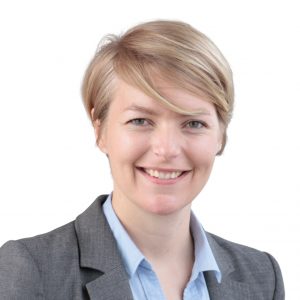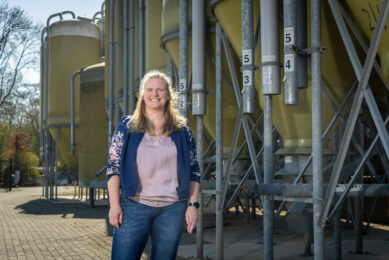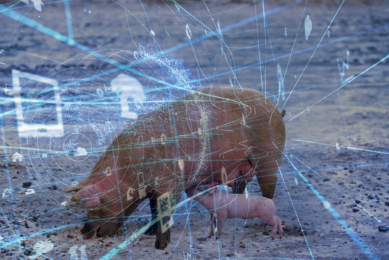Farm visit: Taking organic pig farming to the next level
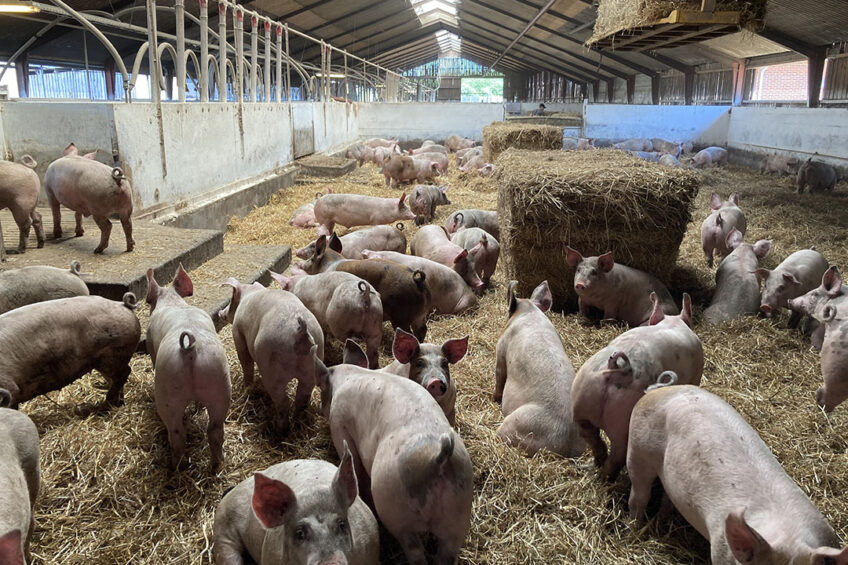
Planting trees, weaning at 10 weeks and smaller litter sizes: these are all part of the mindset of 15thgeneration Danish pig farmers Bertel and Marianne Hestbjerg. It is a mindset that goes beyond the standard organic pig farming requirements.
Organic pig farming on the rise
Organic farming is on the rise and the EU heavily supports it as part of the new Farm to Fork Strategy that outlines actions to boost organic production to 25% of the EU’s agricultural land use by 2030. Denmark is in the forefront of this mission, with high ambitions for organic production. With 1,500 sows and producing 27,000 organic pigs/year, Hestbjerg Økologi is Denmark’s largest organic pig farm, located in Holstebro.
Organic pig production, land protection and forestry
The owners believe in the combination of organic pig production, land protection and forestry. They explain, “We believe that a more animal and environmentally friendly system, in combination with agroforestry, leads to enhanced pork quality and a more sustainable way of using land, soil and resources.”
Besides the fact that trees are essential for carbon sequestration, trees in pasture systems for pigs provide the animals with shelter and shade. During hot days, the farmers create mud pools under the trees, by using water from the drinking water pipes, adding extra comfort to the animal’s lives.
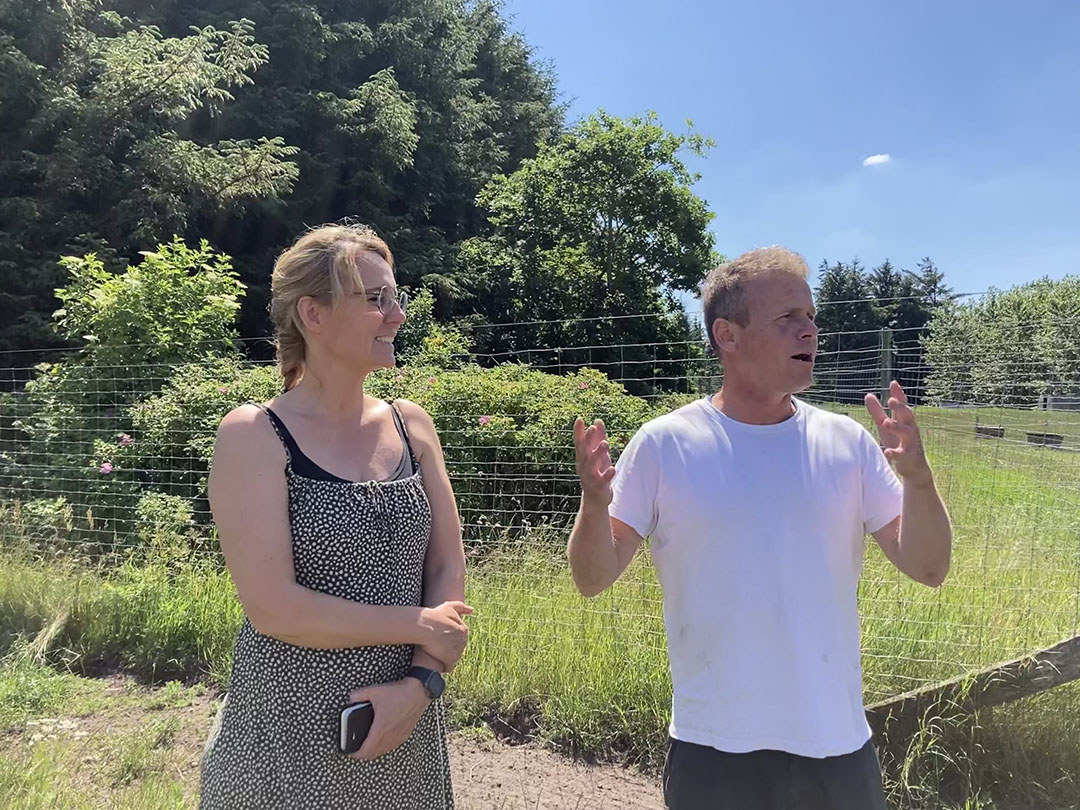
Moving free range sows each year
Under organic farming environmental rules, the free range sows have to be moved each year. That means moving the sows, piglets, fences, huts, feeders and drinking pipes, which the owners undertake each spring. To do this labour-intensive work, the farm employs 30 members of staff.
Bertel Hestbjerg says, “We choose to have the amount of piglets that a sow can take care of, and we do not aim for high litter sizes. We therefore changed to Topigs Norsvin sows (TN70), giving 16 piglets per litter on average and having 16 teats to feed them. This feels very natural to us.”
Piglets can roam free between the fenced areas where the sows are being kept, in the so-called kindergarten. Small feeders supply the piglets with pellets. The sows get the feed in their pen. Their feeder can be closed to prevent birds stealing the feed.
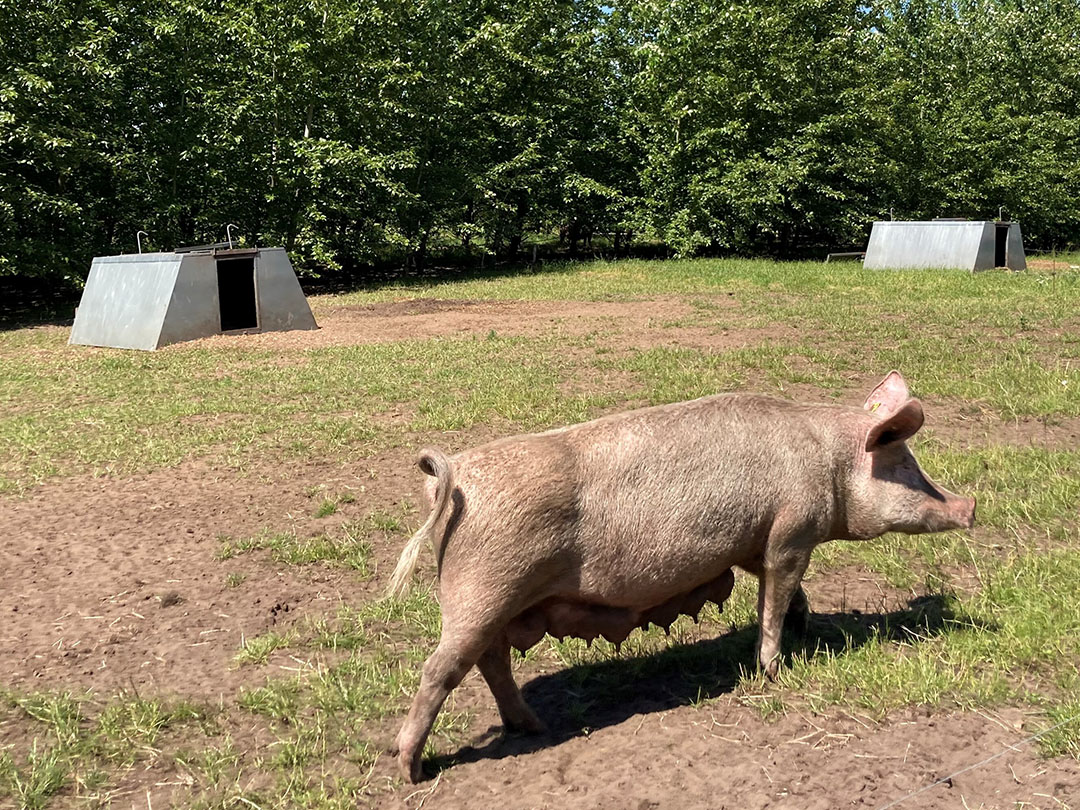
Making a nest with branches
Branches cover some of the farrowing huts. Making a nest with branches is natural sow behaviour. Marianne Hestbjerg says: “Sows drag all the branches into the huts, so we take some out and put them on the roof to prevent the hut becoming fully blocked, but still let the sow be surrounded by the nest material and feel safe.”
All feed is organic, and the farm grows a range of raw materials itself. The organic finisher pigs also receive additional roughage, such as organic root vegetables (beets and carrots) as well as compound feed. Every 2 weeks the farm receives a truckload of 60 tonnes from an organic crop farmer. In turn, that farmer receives organic manure to fertilise his next crops.
The farm has 3 sow locations. There is one finisher unit, in this location in Holstebro. The average litter size on the farm is 15.8, leading to an average of 13.1 piglets weaned per litter. That converts into a number of 23.6 weaned pigs per sow per year.
The finishing unit is where the 10-week-old weaners (23–31 kg) stay for 13 weeks to grow out to 120 kg. The farmers find ten weeks the optimum for the welfare and condition of the sows and piglets.
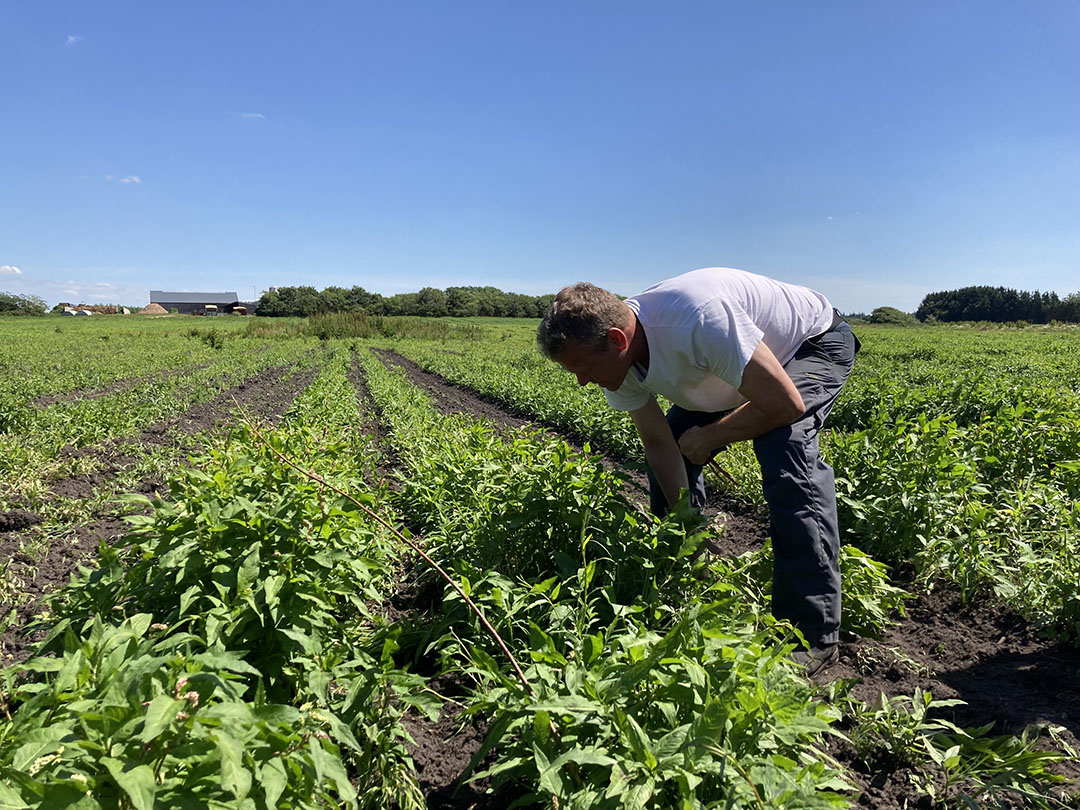
Indoor and an outdoor area
The finisher house has an indoor and an outdoor area, all in accordance with organic pig farming rules. The open area has sprinklers to keep the animals cool during hot days. Indoors, the pigs have a bedded area (straw) to play in and sleep on.
Bertel Hestbjerg says: “Everything we do costs money, so we want to tell our story, so people understand what the brands stand for and what efforts we put in. This means that we do not want to produce bulk meat. The people who buy our meat are also very much into sustainability and animal welfare. And this has a price.”
Bertel and Marianne sell the meat under 3 brands: Poppelgris, Bertel’s Gris and Måltidsboxen. The majority is sold as Poppelgris at Coop supermarkets and a smaller part is distributed to butchers and restaurants via Dansk Cater. The retail price of Poppelgris pork is DKK 30 per kg (€ 4.03).


